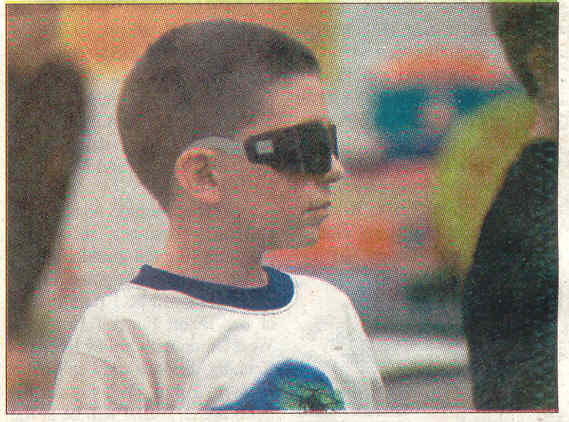Students Learn New Perspective on Vision
Article taken from The Portsmouth Daily Times, March 19, 2004

Blurred vision can hinder learning and development, some doctors say.
Just ask 8-year-old Randy Eldridge, who was having trouble seeing the chalkboard in his second-grade class at Minford Elementary.
He went to his school nurse, then was sent to an eye doctor, who ultimately said he didn't need to wear eye glasses, yet, but taught him ways to see better.
One local optometrist said some children might not know when to go to the doctor. He is working, along with others in the state, to help children detect earlier vision problems.
Dr. Kelly Raises, who works with students using the Realeyes Classroom Initiative program sponsored by the Ohio Optometric Association, said she often has children come to her office who recite lines from the information she presents to youngsters.
Raies was at Minford Elementary on Wednesday teaching about 275 second and third graders about how the eye works and what it's like to have good vision through two interactive videos.
"If you're in the dark, your pupil gets bigger," said Hayley Kline, 8. "And, when you're in the light, it gets small again."
Hands flew in the air as her classmates responded to what they had learned from Ret Na, a puppet used in one video.
"I learned what my mom sees when she looks at stuff. It was amazing," said Tyler Smith, about the shaded glass, smeared with petroleum jelly that he donned to simulate blurred vision.
"It just really educated the kids," Raies said. She passed out pamphlets and interactive games, such as puzzles, for the students to continue learning.
The program is paid for by a Save Our Sight grant from the Department of Health, to create standardized vision education for the state's students.
The fund is generated through applicants to the Ohio Bureau of Motor Vehicles who choose to donate a dollar upon license and registration renewal.
The doctor said the program is essential and encourages others in the county to utilize it.
"If kids don't have their eyes examined, it looks normal to them and they don't know," she said.
"A lot of times, there are problems that need to be corrected as early as 6, and, if they wait, it can't be fixed," she said.
The OOA distributes information about the program to all schools, who then choose whether to enact the program.
Anna L. Mallory